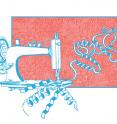Scientists digitally mimic evolution to create novel proteins
Related images
(click to enlarge)
Proteins are nature's machines. They provide oxygen to power our muscles, catalyze reactions that help us extract energy from food, and fend off infections from bacteria and viruses. For decades, scientists have searched for ways to design new proteins that can serve specific purposes in medicine, research, and industry. Now, researchers at the University of North Carolina School of Medicine have developed a method that creates novel proteins by stitching together pieces of already existing proteins. The technique, called SEWING, is inspired by natural evolutionary mechanisms that also recombine portions of known proteins to produce new structures and functions. This approach can generate a diverse set of protein structures with many of the distinctive features that proteins require to carry out specific biological functions.
The findings, published today in the journal Science, could enable researchers to design proteins to play a variety of different roles in human biology and disease, such roles as catalysts, biosensors, and therapeutics.
"We can now begin to think about engineering proteins to do things that nothing else is capable of doing," said senior study author Brian Kuhlman, PhD, professor of biochemistry and biophysics and member of the UNC Lineberger Comprehensive Cancer Center. "The structure of a protein determines its function, so if we are going to learn how to design new functions, we have to learn how to design new structures. Our study is a critical step in that direction and provides tools for creating proteins that haven't been seen before in nature."
At the chemical level, proteins are composed of long chains of hundreds to thousands of subunits called amino acids - the building blocks of life. The sequence of these amino acids ultimately determines each protein's unique geometry. Some sections of a protein might be folded back and forth onto itself like a paper fan; others might be coiled tightly like a spring. In all, scientists estimate that the human body contains about 100,000 different proteins, each the result of millions of years of evolutionary shuffling, culminating in a precise lineup of pleats, coils, and furrows required to carry out a specific job in the cell.
Traditionally, researchers have used computational protein design to recreate in the laboratory what already exists in the natural world. But in recent years, their focus has shifted toward inventing novel proteins with new functionality. These design projects all start with a specific structural "blueprint" in mind, and as a result are limited. Kuhlman and his colleagues believe that by removing the limitations of a pre-determined blueprint and taking cues from evolution they can more easily create functional proteins.
To mimic the mechanisms of natural protein evolution, they developed a computer design strategy called SEWING (Structure Extension With Native-substructure Graphs). First, the researchers took a slew of naturally occurring proteins and digitally chopped them up into well-defined pieces, as if turning a bunch of rag dolls into a pile of arms, legs, and heads. Then they performed a series of computational tests to figure out which pieces would fit well together. In nature, this step would involve looking for stretches of amino acid sequences that are similar between proteins. On the computer, it involved searching for regions of structural similarity so that - in the analogy of the rag doll - a hand would end up being stitched to an arm and then a shoulder, and not a head or a hip.
First author Tim M. Jacobs, PhD, a former graduate student in the Kuhlman lab, used this method to map out 50,000 of these stitched together proteins on the computer. He then tapped a number of different metrics to whittle down the list to the top 21 proteins, which he produced in the lab. Jacobs and colleagues took pictures of these proteins using x-ray crystallography and NMR, and found that the proteins contained all the unique structural varieties they had designed on the computer.
"We were excited that some had clefts or grooves on the surface, regions that naturally occurring proteins use for binding other proteins," said Jacobs. "That's important because if we wanted to create a protein that can act as a biosensor to detect a certain metabolite in the body, either for diagnostic or research purposes, it would need to have these grooves. Likewise, if we wanted to develop novel therapeutics, they would also need to attach to specific proteins."
Currently, the researchers are using SEWING to create proteins that can bind to several other proteins at a time. Many of the most important proteins are such multi-taskers, including the blood protein hemoglobin that carries four copies of oxygen from the lungs to the body's tissues.
Source: University of North Carolina Health Care
Other sources
- Scientists digitally mimic evolution to create novel proteinsfrom Science DailyTue, 10 May 2016, 17:10:54 UTC
- Study offers a new route to design the 'cellular machines' needed to understand and battle diseasesfrom PhysorgTue, 10 May 2016, 14:30:45 UTC
- Scientists Digitally Mimic Evolution to Create Novel Proteinsfrom Newswise - ScinewsTue, 10 May 2016, 14:01:11 UTC
